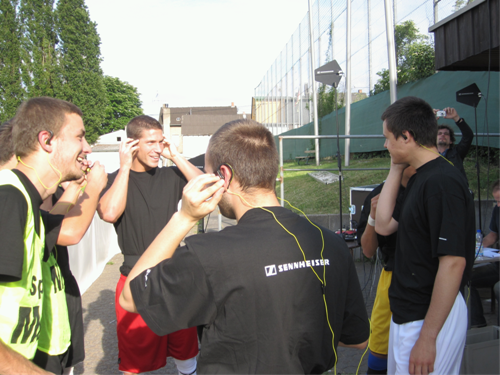Acoustic rhythmical intervention on soccer
Should football players hear music while passing on the ball, and should they hear the same music within a team even in total synchrony? Will the passing benefit from common music hearing in terms of enhancing the rate of passes in general and the rate of succesful passes in particular?
The research project ‘SoundSoccer’ explores potential effects of musical synchonisation on running and passing behavior within a team.
Does the cooperation within a team benefit from musical synronisation in terms of ‘joint action’ in the auditory domain? Wireless transmitted and precise synchronised music could work as a common time base, enhancing the timing precision also between subjects and provoking distinct running cadences and may also lead to spontaneous rhythmical couplings. Tempi of music pieces are selected with reference to typical running cadences in soccer at about 110-160 bpm and will be changed to provoke tempo changes, variations of rhythms, dribblings etc.

Football players applying wireless audio receivers and half open sport-earphones before starting soccer training.
Project Management
Prof. Dr. Alfred Effenberg (Hanover), Manfred Müller (Cologne)
Scientific Coworkers
Dr. Gerd Schmitz (Hanover), Armin Friedrich (Cologne), Matthias Hornschuh (Cologne)
Project Partners
Prof. Dr. Jürgen Peissig (Leibniz University of Hanover)
Project Support
Sennheiser electronic GmbH & Co. KG
Research Area
Perception & Action, Joint Action

